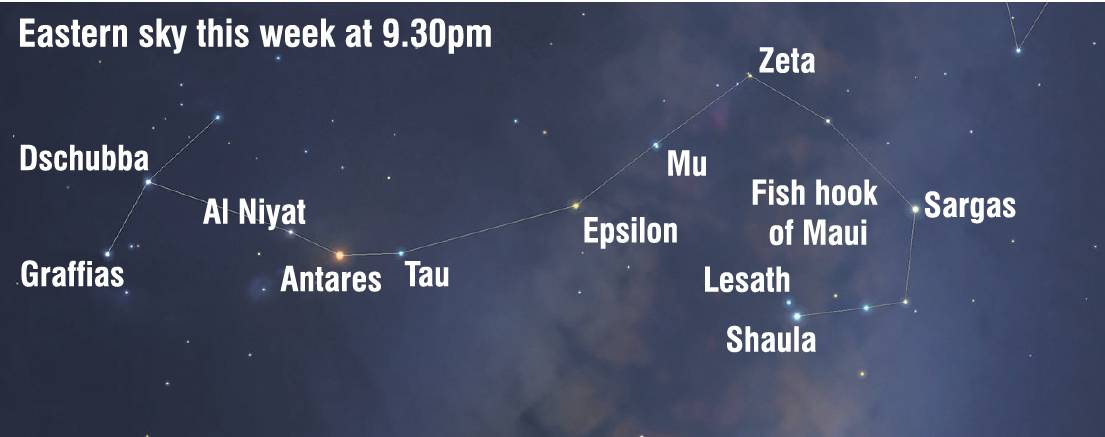
The moon reaches its last quarter phase on Wednesday at 10.56am. This is excellent news for stargazers since it means that moonlight doesn’t interfere during the early part of the night.
This week I’d like to take you on a tour of one of my favourite constellations, which is well placed in the eastern sky at around 9.30pm.
I’m talking about Scorpio, the Scorpion, whose distinct curve of stars was thought to resemble a sting by early Arab astronomers. To Polynesian navigators, the same stars were the fish hook used by Maui to pull the Hawaiian Islands off the ocean floor.
Whatever they resemble, the stars are located in a particularly beautiful part of the sky containing the heart of our home galaxy, the Milky Way. I, for one, never tire of viewing the beautiful clouds of dust and gas, which are apparent even from light polluted city suburbs.
The brightest star in Scorpius is Antares. It shines with a distinct red colour and is sometimes referred to as the heart of the Scorpion. Antares is a red supergiant star. It is so big that were it located in our solar system, it would envelop the orbits of all the planets out to Mars!
The distance to Antares is estimated to be 550 light years, which means that the light you see when looking at this star began its journey in the year 1470.
Graffias (Beta Scorpii) is the second-brightest star in the constellation. It shines with a lovely blue-white colour and, if you have a small telescope and point it at the star, you will see that it has a companion quite close by. This has been described as one of the most beautiful double stars in the sky, so it’s definitely worth taking a look.
If you have a pair of binoculars, point them towards the star Zeta and then slowly sweep towards the star Mu. If you look carefully you will discover a lovely star cluster containing more than 120 stars called NGC 6231. Don’t miss it!












